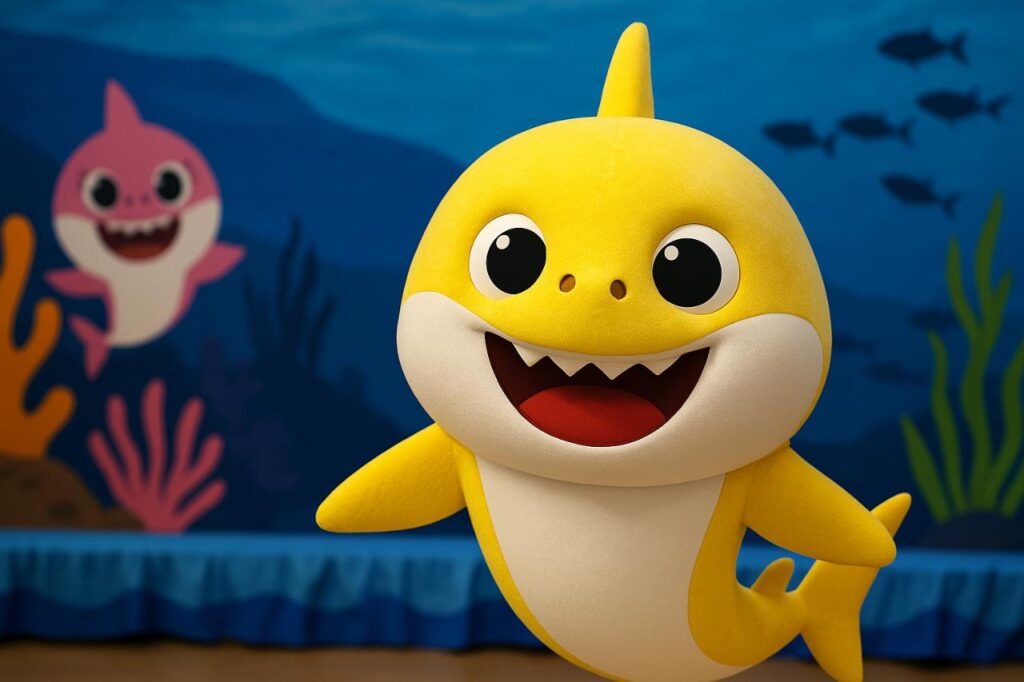When Kim Min-seok approved the release of a 90-second children’s song in June 2016, he had no idea he was about to launch one of the most viral moments in internet history.
That short clip turned into Baby Shark, a cultural phenomenon that has now crossed 16 billion YouTube views, earning the title of the platform’s most-watched video ever. Loved by toddlers, playfully dreaded by parents, and recognized everywhere, it became the unexpected spark that transformed Pinkfong into a global media powerhouse valued at more than $400 million.
Today, the company’s journey—from a tiny startup to a publicly listed entertainment brand—shows just how far a simple nursery tune can go when creativity, timing, and digital culture collide.
A Small Team With Big Ambitions
Pinkfong’s story began in 2010, when the company—then known as SmartStudy—was founded by just three people, including Kim Min-seok and chief technology officer Dongwoo Son.
Their early office was so small that “we didn’t even expect a salary at the time,” Kim recalls. The team focused on digital content for children aged 12 and under, constantly experimenting with formats and learning what kids responded to online.
As the company refined its strategy—shifting toward younger audiences and simpler, learning-focused videos—Pinkfong slowly grew to around 100 employees. That was when one of its creations stood out: Baby Shark.
In 2022, the studio officially rebranded as The Pinkfong Company, named after its cheerful fox mascot. Today, it has more than 340 employees and offices in major content hubs including Seoul, Tokyo, Shanghai, and Los Angeles.
The Baby Shark Breakthrough
Baby Shark may seem like a new tune, but its roots go back to American summer camps of the 1970s. Pinkfong’s version added fast-paced beats, an addictive rhythm, and a simple “chanting” style that children could instantly repeat.
“It’s like a K-pop song—rhythmic and addictive,” Kim says.
But despite its now-iconic status, Baby Shark didn’t go viral immediately. Its turning point came when dance routines featuring the song became popular at children’s events in Southeast Asia. Videos of kids—and adults—doing the Baby Shark dance began spreading across social media.
Soon, the views started to skyrocket, turning the Pinkfong office into a celebration zone.
By November 2020, the song officially became YouTube’s most-viewed video ever.
In the years following its release, Baby Shark generated nearly half of Pinkfong’s revenue and fueled a vast pipeline of new content, merchandise, and licensing deals.
Legal Battles and a Landmark Victory
Success brought challenges too. In 2019, Pinkfong was accused of copying an American composer’s version of the song. The case eventually reached South Korea’s Supreme Court.
Pinkfong argued—and the court agreed—that its version was based on a public-domain folk song. The ruling cleared the company of plagiarism and allowed it to move forward with confidence.Kim says the timing of the verdict boosted the team’s morale just as they were preparing to go public.
Beyond Baby Shark: Can Pinkfong Repeat Its Success?
As Pinkfong grows, many industry experts wonder whether the company can avoid being defined by a single hit.
According to Korea University lecturer Min Jung Kim, the company’s main advantage lies in its audience: toddlers. Young children tend to watch the same videos repeatedly, giving Pinkfong’s content strong longevity.
Still, sustained growth requires more than one viral clip.
Pinkfong says it’s already expanding. While Baby Shark still brings in about 25% of company revenue, Bebefinn—another of its franchises—has climbed even higher, contributing roughly 40%.
Parents, however, have mixed feelings.
One father told the BBC he values Pinkfong’s educational content, but his wife finds Baby Shark “too over-stimulating.”
Still, his daughter—about to turn three—insisted on a Baby Shark-themed birthday party, proving the tune remains irresistible to young fans.
Whether Pinkfong can replicate Baby Shark’s commercial magic is still uncertain. But the company is investing heavily in new characters, films, and data-driven content strategies after raising nearly $52 million during its stock market debut.
A Viral Legacy—and the Challenge Ahead
Kim Min-seok says Pinkfong has already achieved something “many creators can only dream of”—building a global brand recognizable across continents.
But he also knows the real test begins now.
To keep investors confident and audiences engaged, Pinkfong must show it is more than the studio behind Baby Shark. With new franchises rising and a long-term vision centered on technology, creativity, and global expansion, the company is determined to prove it is not just a one-hit wonder.
eam focused on digital content for children aged 12 and under, constantly experimenting with formats and learning what kids responded to online.
As the company refined its strategy—shifting toward younger audiences and simpler, learning-focused videos—Pinkfong slowly grew to around 100 employees. That was when one of its creations stood out: Baby Shark.
In 2022, the studio officially rebranded as The Pinkfong Company, named after its cheerful fox mascot. Today, it has more than 340 employees and offices in major content hubs including Seoul, Tokyo, Shanghai, and Los Angeles.

